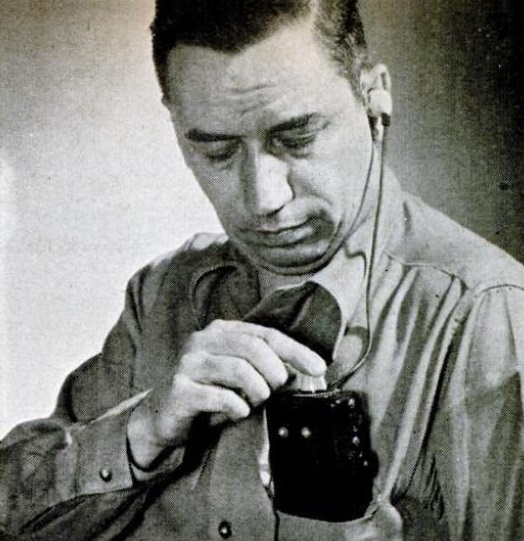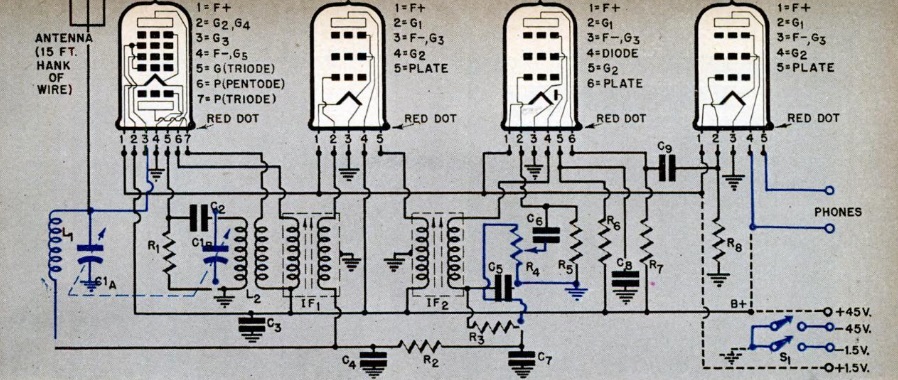 The gentleman shown here is listening to one of the first pocket-sized radios, the plans for which were shown in the July 1950 issue of Popular Science.
The gentleman shown here is listening to one of the first pocket-sized radios, the plans for which were shown in the July 1950 issue of Popular Science.
The magazine notes that you don’t have to carry your portable radio–you can wear it. The receiver is so small that it will slip into your pocket, and you’ll hardly know you have it with you. The set was a four-tube superheterodyne that would pick up everything on the dial, thanks to four subminiature tubes.
The article did state that one needed to have “a little practice in radio building” in order to put it together. Indeed, the mechanical construction looks very challenging, trying to squeeze all of the parts into a small makeup box.
Unfortunately, the project is challenging partly because it’s unclear which tube is which. The set calls for four tubes: 2G22, 2E32, 2E42, and 2E36. Unfortunately, they’re not labeled on the schematic, and the text gives only a few hints. The 2E36 is the audio output, the tube on the far right. I think the other three, from left to right, are 2G22, 2E32, and 2E42, but I’m not positive. In any event, the tubes are taped to the sides of the IF transformers to squeeze everything into place. Of course, it probably doesn’t matter, since these tubes are probably all unobtainium.

